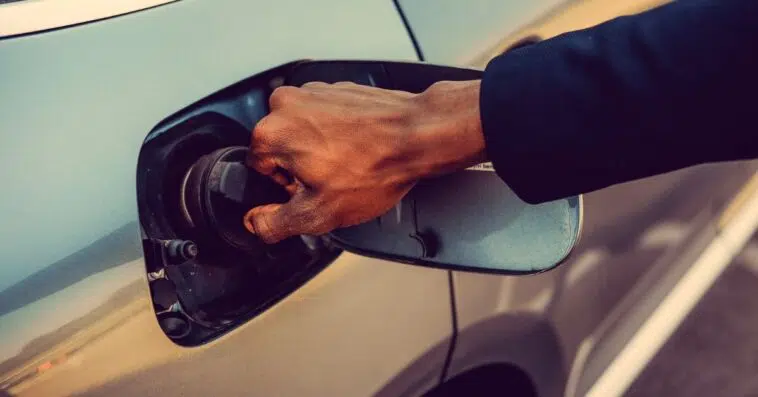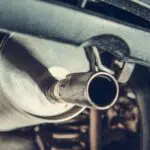You don’t need to be an automotive specialist to wreck a car engine, and it’s simple to do. So now I will tell you what you need to put in the gas tank to destroy the engine.
So, let’s get this conversation going. Many people have been wondering how to ruin a car engine through a gas tank.
So, how do you harm an engine by putting something in a gas tank? It is possible to damage a car’s engine by putting something other than gasoline in the gas tank. Water, Sugar, Salt, Urine, Coke, Bleach, and various other substances fall into this category.
The truth is the fact that its gas tank can quickly ruin a car’s engine.
You may put anything in the gas tank except gasoline, and the car’s engine will be ruined. So, if you intend to wreck a car’s engine, you can easily do so by destroying the gas tank.
You don’t even need to be an automotive expert to do this task.
You can harm a car’s engine without even knowing it because all you have to do is put things in the gas tank that will already ruin the engine. A car’s engine can be destroyed by anyone.
Regardless of the cause, practically anyone may harm a car’s engine. Some individuals have long been puzzled about the worst thing they could put in a gas tank.
Is it possible for the engine to be damaged or even stall? So, to assist you, we have compiled a list of things that have been shown to destroy a car’s engine when poured into the gas tank.
Let’s get started!
TABLE OF CONTENTS
What To Put In A Gas Tank To Ruin The Engine
Many objects have been proven to harm a car’s engine when placed inside a gas tank. In other words, putting anything other than the gasoline in the car’s gas tank can cause the engine to fail.
In addition, water, sticky liquid, salt, sugar, and various other substances will clog the fuel filter.
You can also put Coke, hydrogen peroxide, bleach, urine, brake fluid, and various other substances in your car, all of which will cause damage to your automobile and its engine.
So, if you are determined to destroy a car’s engine, you may choose whatever you want and put it in a gas tank.
You can try mixing liters of bleach with the fuel if you really want the most powerful, but it will be a disaster.
It would be great if you recall, though, that this is a risky decision. Remember to think about safety precautions if you are about to put gallons of bleach in your gas tank.
However, if you want to wreck your car or any car in that regard completely, this is a great idea.
When you pour gallons of bleach into a car’s gas tank, it may startup. If there is still fuel in the car, it can be used to keep it running.
However, if there is no fuel remaining in a gas tank and the only liquid available is bleach, the vehicle will suffer considerable and severe damages.
The car will not start if there is still fuel in the tank. If you leave bleach in the gasoline system for an extended period, it will corrode and rust various engine components.
Bleach contains chlorine, and you should be aware that chlorine is a highly corrosive oxidant.
What Kind Of Liquid Will Ruin A Car Engine?
As previously said, various liquids can be put inside a gas tank to ruin the engine.
- Coke, brake fluid, urine, and other substances, for example, can be added. The main truth is that any liquid other than gasoline might cause damage to your vehicle and its engine.
- Bleach is your best bet if you want to get the most value for money. The bleach, on the other hand, will severely damage the car’s engine.
- Water is another option. If something other than gasoline is put into a car’s gas tank, it will cause damage—ninety percent of bleach in water. Bleach, on the other hand, can quickly destroy a car’s motor.
Because bleach is 90% water, putting water in a gas tank will have the same effect. It is also highly detrimental to the engine of an automobile.
Water will have the same impact as bleach when mixed into gasoline. Although bleach can induce corrosion and rust, this is not always the case with water.
However, it can be just as harmful as using bleach. So, if you are driving a car and don’t notice the liquid in the gas tank, the car can act as a wild horse, and you won’t manage it.
It can also cause the engine to dislodge from your engine mount, which is dangerous. If you wreck a car engine, please ensure no one drives it for a while.
For some people, it can be extremely harmful. This is a more in-depth examination of these liquids.
1. Coke In The Gas Tank
When Coke’s chemical makeup combines with gasoline in an automobile, the result could be a corrosive sludge that clogs the engine.
As a result, Coke or any other soft drink could harm your car’s engine.
Putting Coca-Cola in a gas tank is among the techniques to wreck a car engine. Depending on how much soft drink is left in the car’s gas tank.
When you pour Coca-Cola into the gas tank, what happens?
What follows is a genuine possibility. Unfortunately, not only Coca-Cola but any soft drink poured in large amounts in the gas tank will quickly harm your car motor.
If this happened to your car, you would be able to tell by the fumes. The automobile produces a lot of fumes as it should.
What Should I Do If I Have Coca-Cola In The Gas Tank?
If you drive the vehicle with Coke in the gas tank, you should first see a repair shop or a skilled car mechanic.
They will examine your car and inform you of the extent of the damage to the engine. You may incur a significant financial loss as a result of this decision.
2. Water In The Gas Tank
The car engine will be damaged if there is water in the gas tank. Isn’t this unusual? Water may appear harmless, yet it can destroy the car engine and place you in grave danger on the road.
An automobile can’t run fast if there’s water in the gas tank. The engine will detach from an engine mount if water is added to the gasoline. Assume you are not paying attention and continue driving.
The automobile then drives nicely for a few moments before being struck again, and so on.
The car then comes to a complete halt in the middle of a road. Nobody, I suppose, wants to be a part of this experiment.
We all know that we wash our cars with water the majority of the time.
You may, however, clean an engine bay without using water. As a result, anytime we wash the car engine, we must exercise caution.
What Is The Maximum Amount Of Water In A Gas Tank Before It Ruins A Car?
The engine of an automobile can be damaged by a full glass of water or more. Even a tiny amount can cause considerable damage to your car’s engine.
How Can I Determine If There Is Water In My Gas Tank?
Water in gas tanks, as you may know, causes a lot of harm to your car’s engine.
Let’s look at the signs and symptoms of the water in a gas tank:
- Misfires: Misfires alert you to the fact that you need to carry water in your gas tank. When the water enters the cylinder’s combustion chamber, you will almost certainly detect a misfire.
- Rough Acceleration: Rough acceleration is a term used to describe how quickly something moves. When there is water in a gas tank, the most common symptom is rough acceleration. Rough acceleration is something you will notice a lot.
- The Check Engine Light Is On: One technique to tell whether you have water in your gas tank is to check the engine light.
- Rough Idle: This is a simple way to check the water in a gas tank. A car engine is prone to idling due to tiny errors. It is at idle that you will notice them the most.
What To Do If Your Gas Tank Is Filled With Water
It’s crucial first to determine whether or not you have water in your gas tank. Water in a gas tank, on the other hand, can cause the car engine to fail.
- Displacement: If there is water in the gas tank, displacement is the best method of removal. Displacement will quickly remove the old gas and substitute it with high-octane gasoline.
- Changing The Gas: The simplest approach is to replace all of the gas in the gas tank. However, as it is a misuse of fuel, replacing the gas may not be the most cost-effective option.
- Seek Professional Assistance: Whatever happens in an automobile, consulting a specialist is the best approach to figure out what’s wrong and how to fix it. It’s not easy to get water out of a gas tank. As a result, hiring a competent mechanic is always a good idea.
3. Bleach In The Gas Tank
If you can drive a car with the bleach in the gas tank, the car’s gas tank is at grave risk.
Bleach will damage and ruin metal and rubber parts if it remains inside the engine and fuel system for an extended period. The effect of bleach is that corrosion will occur more quickly than usual.
It is general knowledge that bleach can be used to destroy an automobile engine. In addition, bleach can be used to destroy a car engine unintentionally.
What happens if the gas tank is contaminated with bleach?
Bleach in a gas tank is incredibly unsafe for any car. It’s a complete calamity.
Bleach is constituted mainly of water, and when combined with a small amount of chlorine, it becomes caustic and corrosive.
The automobile will start and run at first, but as there will be no fuel in the tank, it will be halted at any time or even place. Bleach will also ruin the entire engine by rusting many sections of it.
We all know that flooded car engines can be repaired; however, damaged automobile engines are more difficult to repair. The engine requires to be changed the majority of the time.
4. Salt In The Car Gas Tank
The bottom of a gas tank will corrode over time if there is too much salt in it.
In addition, when salt is mixed with gasoline, salt crystals will fall into a fuel pump, blocking the filter, and the engine will not start.
Another issue you may encounter is that the vehicle may become too hot to start.
Salt would not cause much damage to a car engine, but if it gets into a gas tank, it can cause a lot of damage. This is because the engine will reduce power, and the salt in the tank will corrode it.
5. Sugar In The Gas Tank
In gas tanks, sugar converts the fuel to surgery petroleum. Because sugar will not dissolve in gasoline, it will clog the fuel filter.
Sugar will settle in the gas tank’s bottom if it is passed through the fuel filter. And it messes up your car’s engine and gas tank.
This little gadget comes in handy if you completely ruin the car engine. Sugar is used to make various products, including sweet sticky liquid, molasses, waffle syrup, honey, and more.
As a result, you will need to clean your car’s fuel pipe, filter, and other engine components. This is required to clear the traces that are found in the system.
4 Signs Your Gas Tank Is Full Of Sugar
Sugar cannot enter the car engine because most vehicles feature a suitable fuel filter. However, here are some of the most typical signs and symptoms of having sugar in the gas tank.
- The fuel pump fails consistently
- The car will not start
- Engine stalls
- Poor engine performance
Sugar will not dissolve in gasoline. So, the sugar eventually settles to the gas tank’s bottom instead.
6. Urine In The Gas Tank
The amount of urine determines the urine that is found in a gas tank. A modest bit of urine in the gas tank will not cause any problems.
It’s like pouring the glass of water with a tiny portion of urine. However, large amounts of urine are clearly harmful to gas tanks.
Urine is another substance that can cause damage to an automobile engine, albeit more slowly. If you detect or experience this in your car’s gas tank, you must clean the filter and fuel line.
7. Brake Fluid In The Gas Tank
Is it true that brake fluid might harm a car’s engine?
Yes, without a doubt, there is no way to avoid this. Brake fluid can destroy a car engine and put you in danger if the car’s brake fluid level is close to the top of your car’s gas tank.
As we all know, brake fluid is a kind of hydraulic fluid utilized in the hydraulic brakes and clutches in automobiles.
So, keep an eye on the brake fluid level, and you will be able to keep the automobile engine and yourself safe.
8. Hydrogen Peroxide In The Gas Tank
In a car’s gas tank, hydrogen peroxide will increase the car’s power and speed. When the ingredient is combined with gas, it produces the same effect as NOS.
The combination of gas and hydrogen peroxide enhances the burn rate and raises the temperature of the engine. When your car’s engine gains more power, it burns out and is destroyed.
How To Damage An Engine Without Proof
You can insert any liquid in the gas tank as long as you do it discreetly so that no trace remains.
You can even add some water into a gas tank, which will not be discovered. Likewise, water combined with gasoline may go undetected.
Conclusion
It is quite easy to understand how to ruin a car engine through the gas tank. It is possible to destroy a car’s engine by putting various things in the gas tank.
You don’t have to be a mechanic to wreck a car’s engine. You can put any liquid in the gas tank except gasoline, and it will harm the car and its engine. The best liquid to use is bleach.




